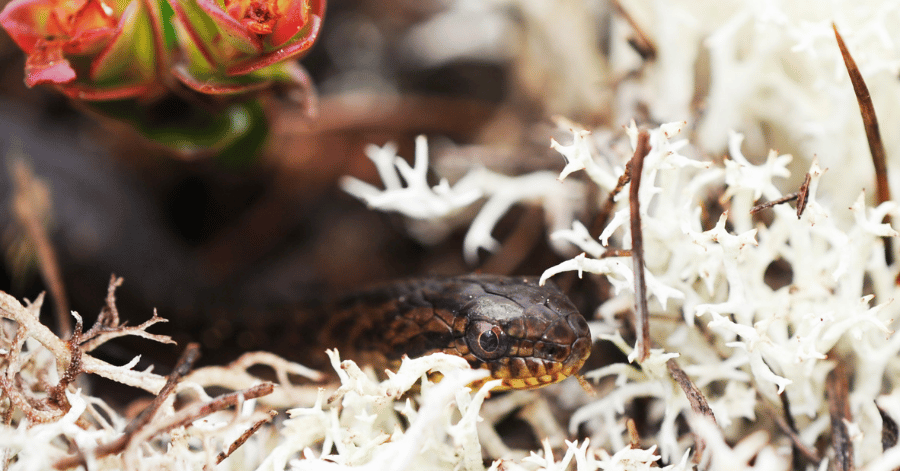
BLOOMINGTON, Ill. — More than a decade after discovering a snake on a Peruvian mountain top, Robert W. Harrington Endowed Professor of Biology Edgar Lehr and his team of researchers have identified the reptile as a new species and named it after famous conservationist Jane Goodall.
The discovery was made in 2012 during a series of expeditions in and around the Yanachaga Chemillén National Park in Peru, which rises more than 9,000 feet above sea level.
Lehr recalls the difficulties of reaching the mountain peak of the Chacos region of the area during the rainy season. The team’s truck couldn’t navigate the muddy road situated near a radio tower, so the researchers continued on foot. Luckily, a group of engineers soon drove by on their way to inspect the radio antenna, and had to be convinced that Lehr’s team was in fact on a research trip and not up to anything nefarious. The engineers then gave the biologists a ride to the mountain top.

“I remember the spectacular view from Chacos over the untouched primary cloud forest. The mountain ridge where we camped was covered in blooming orchids, and continuous short rain showers made fieldwork a bit difficult,” said Lehr.
During a break in the rain, Lehr spotted a brown snake with yellow eyes basking in the afternoon sun on a bed of lichen.
“That was unexpected and a big surprise,” he said. “I first misidentified the snake due to morphological similarities with other snakes. The recognition as a new species came many years later.”
Peruvian biologist Juan Carlos Cusi joined Lehr in fieldwork that led to the discovery. Other researchers who contributed to the project are César Aguilar, curator of herpetology at the Natural History Museum of the San Marcos University in Lima, Peru; Swedish engineer Mikael Lundberg; Peruvian biologist Claudia Torres; and Jack Sites, evolutionary herpetologist from Bringham Young University.
Together, the group used tissue samples for genetic research, which revealed that
the snake was indeed an unknown species in early 2025.
“We had to make a strong case comparing it with related snake species from high elevations
in Peru — among them, rare species that did not have genetic sequences available.
That was a difficult task that required an excellent research team that I was building
for this purpose, and we succeeded,” Lehr said.
In recent years, Lehr has named several of his newly discovered species in honor of prominent conservation advocates — including a frog named for David Attenborough, a lizard for E.O. Wilson and a snake for Harrison Ford. This most recent tribute is named Tachymenoides goodallae in honor of Jane Goodall, who is considered the world's leading expert on chimpanzees.
“Celebrities can help to create awareness of the importance of biodiversity research
to discover the unknown. When I was a young student in Germany in the mid-1990s, Dr.
Goodall gave a presentation in Frankfurt and many biology students attended her talk,”
recalls Lehr.
Goodall, he said, walked onto the stage quietly, only to start screaming at the audience
like a chimpanzee.
“She immediately explained that this is how chimps greet friends they have not seen
in a while. It was the best opening of a talk I have ever experienced,” joked Lehr.
Goodall contacted Lehr after learning about the naming to say, "You never heard from me how absolutely thrilled I am to have this beautiful snake named for me. What an amazing honour. I’m not sure you know, you and your team, how much I love snakes."
To date, Lehr has discovered more than 100 new species of amphibians and reptiles. These discoveries during his 28 years of research in Peru make up nearly 9% of the country’s herpetofauna.
“Every species I work on requires my entire attention to successfully complete the project. Then, I close the chapter and focus on a new project,” he said.
In April, Lehr was awarded the highest teaching honor at Illinois Wesleyan University as the 2026 recipient of the Kemp Foundation Award for Teaching Excellence.